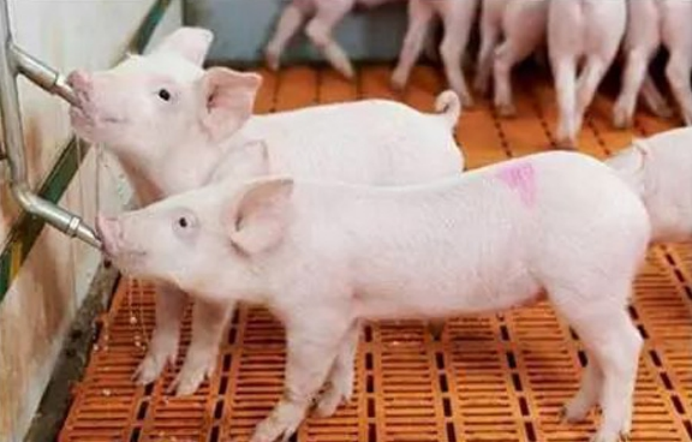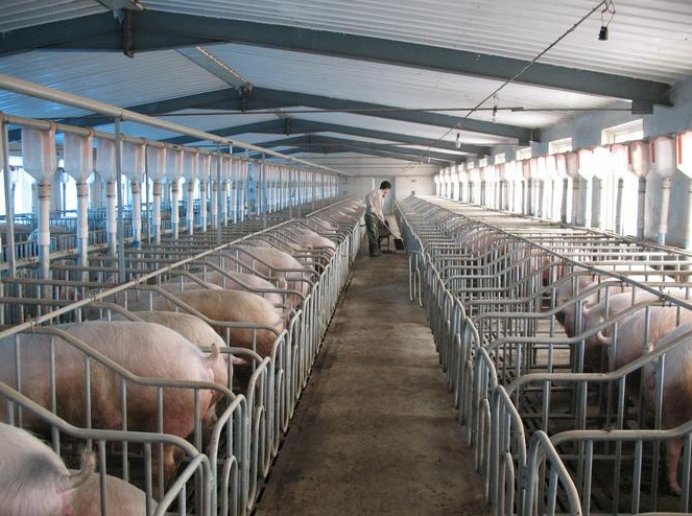Tips For Pigs To Drink Water: Not Only Enough, But Also Good Drinking
Water is the source of life and an essential substance for transporting nutrients. In the early stages of water shortage, pigs' appetites decrease significantly, especially when they don't like to eat dry powder. As water loss increases, pigs' appetites may completely disappear.
Water is the cheapest and most important nutrient that pig farmers tend to ignore. The functions of water for pigs are as follows:
1. Create a safe environment and transport nutrients, metabolic waste and hormones in the body;
2. Maintain constant body temperature and acid-base balance;
3. Participate in many chemical reactions in the body;
If the amount of water is not sufficient to meet the physiological needs of pigs, then the pig's immune system cannot be maintained normally. Pigs obtain water through the following three ways: feed, drinking water, and metabolic water in the body. Few people have systematically studied the amount of water required by pigs. The reason is that on the one hand, people think that pigs will consciously drink water when they need water, and we only need to provide sufficient drinking water.

On the other hand, the objective fact is that it is very difficult to determine the amount of water required by pigs, because few commercial companies are willing to pay researchers to study this topic that has no commercial significance (although the water issue is very important in pig production). Moreover, the method of studying the requirement of other nutrients cannot be used to study the requirement of water. When studying the need for amino acids or energy, the evaluation indicators commonly used are not suitable for studying the requirement of water. In addition, many environmental factors such as temperature, diet composition (mineral and protein content), and especially salt intake, all affect the requirement of water.
How to scientifically and reasonably meet the water needs of pigs?
Pigs are suitable for drinking cool water in summer, while drinking warm water in cold seasons is more effective, which can promote the feed intake of pigs, significantly increase the daily weight gain of pigs, and reduce the diarrhea rate.
Frequently check the water flow rate at the beginning, middle and end of the water supply system. Water flow rate: The water flow rate for pigs weighing 6-10kg is 0.5L/min; the water flow rate for pigs weighing 25-50kg is 0.7L/min; the water flow rate for pigs weighing 50-90kg and pregnant pigs is 1.0L/min; the water flow rate for lactating sows is preferably 1.5L/min.
The temperature of the drinking water and feed of pigs in the pig drinking fountain is closely related to the growth, development and health of pigs. Especially for piglets, when the drinking water temperature is lower than the body temperature, not only do pigs need extra energy to increase the temperature of the water intake, but cold stress can also cause symptoms such as gastric ulcers and indigestion in pigs.

According to the test conducted by University, suckling piglets drinking 37℃ warm water supplied by a multifunctional constant temperature waterer can gain 39.4g more weight per day and 0.82kg more weight than piglets drinking normal temperature tap water, consume 0.34kg more feed per head, and have a 20% lower diarrhea rate. Water temperature is also very important for sows in cold seasons. If lactating sows are fed water and feed at 0℃, 0.5kg more concentrate feed will be wasted every day to maintain body temperature. Feeding pregnant sows with cold water and feed in winter can easily cause adverse consequences such as miscarriage. The suitable temperature for pigs to drink water in cold seasons is 16-20℃ for growing and fattening pigs and pregnant pigs, 20-25℃ for nursery pigs, 25-28℃ for lactating sows, and 35-38℃ for lactating piglets.
There are many factors that affect the water requirement of pigs, such as temperature, feed type, pig size and physiological state, which all have an important impact on the water requirement of pigs. Under house feeding conditions, a sow with piglets needs to be supplied with 75-100L of water per day, pregnant sows, boars, growing pigs need 30L, and piglets and fattening pigs need 15-20L. It is extremely important for weaned piglets to drink enough water in the first two weeks after weaning, because at this time, they need to drink a higher amount of water to excrete excess nitrogen when eating high-protein feed, so as to ensure feed intake and reduce morbidity. In particular, the water supply for lactating sows in summer should be guaranteed, and about 40kg of water is needed per day. Insufficient water will cause a decrease in feed intake and milk secretion.